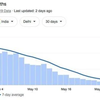AMERICAN MONETARY INSTITUTE PO Box 601, Valatie, NY 12184 Tel: 224-805-2200 email:ami@taconic.net http://www.monetary.org
Dedicated to the independent study of monetary history, theory and reform
“Over time, whoever controls the money system controls the nation” Stephen Zarlenga, Director How the --
N.E.E.D. Act gives an Immediate, Seamless and Non-Disruptive Overnight Transition from a Crisis-Prone Bank Debt System to a Stable Government Money System
by Jamie Walton August 2015
The NEED Act is an elegant and simple law which overnight converts our crisis prone bank debt money system into a pure, reliable U.S. money system in fully secure accounts. It is painless, everybody’s money is maintained safe and secure, and all debts can be payable, meaning no losses from systemic defaults (thus restoring confidence in crisis ridden markets).
Overnight Conversion of Bank Deposits - 1 Upon the NEED Act becoming law, all bank deposits are designated and treated as United States Money (sovereign money, just as circulating coins from the U.S. Mint are now).
All bank deposits become “safekeeping accounts;” they are no longer owed by banks to their depositors, as they now are; but are instead maintained in safekeeping for depositors (what people think they are now).
They’re still exchangeable at will for U.S. currency notes and coins.
This change happens overnight and won’t disrupt business. It relieves banks of a liability they now have to their depositors. All these liabilities (bank deposits) are equal in value to the bulk of the U.S. money supply.
In exchange for removing this liability from banks, an equal liability is put in its place which requires banks to pay over to the U.S. Treasury the repayments from outstanding loan balances - 2 due to them, when banks are repaid by their borrowers. - 3 The interest remains income of banks.
This applies only to the amount of bank loans (or security purchases) that resulted in the creation of bank deposits out of thin air – from so called fractional reserve banking. Thus overnight, banks are relieved of liabilities that might be payable at any time (whenever the depositor asked for them), and these are replaced with liabilities that are only payable as and when the borrowers repay their bank loans.
Any bank loans that arose from banks borrowing money from others will still be paid back to the banks’ lenders in the normal course of business. Thus banks have no more liabilities in total than they had before.
Thus banks’ liquidity situation is dramatically improved, while their net worth is unaffected. Also banks’ income situation is dramatically improved since they will no longer pay interest on deposit accounts (their main expense) and can instead charge fees for their deposit services.
It’s an Overnight, Seamless Transition to a Just Monetary System As the principal on bank loans is paid over to the U.S. Treasury it goes into a “Revolving Fund Account” and is recycled back into the economy to maintain the money supply levels. The Treasury revolving fund can lend this real U.S. money back to banks if needed and it can provide funding to pay off the national debt as it comes due; it can provide (on a per capita basis) interest-free loans to state and local government entities (including school and fire districts), and provide a source of instant funding in case of a national emergency.
1 including the equivalent for credit union accounts and Fed accounts - 2 including on securities (e.g., bonds) that were purchased by banks through the creation of bank deposits 3 instead of these deposits being destroyed, as they are now when repayments are made on bank loans
2
“But Wait – There’s More – Much More” The Fed presently holds about $4.2 trillion in various securities in its System Open Market Account (SOMA) as “backing” for present day currency and management purposes.
Under the NEED Act these are no longer required4 and can be sold back into the market. This can easily provide funding for a onetime tax free dividend for all citizens living in the U.S. It could also be used to pay off all outstanding student debt (about $1.2 trillion).
As the economy needs more money5, the Monetary Authority will advise Congress the amount and the Treasury will be authorized to create it instead of borrowing/taxing, and can fund programs for infrastructure, education, assuring social security, and resolving mortgages, as authorized and appropriated by Congress (again on an equitable per capita basis).
6 For example it can be used to fund a sorely needed national health care system. The NEED Act also grants one fourth of all new money created each year directly to the states 7 for their needs – for example pensions. Since the federal and state and local governments will have an interest-free source of money, they will normally no longer need to borrow.
Thus as investors holding various government bonds are repaid; if they want to keep earning money from such investments, they will have to re-invest in businesses in the private sector, thereby generating more economic activity and more employment.
Interest rates could fall. Removing interest expenses from federal, state and local government budgets means taxes can be reduced, which would increase the disposable incomes of consumers and producers alike, thus generating more economic activity and thus more employment. Good-paying jobs will be generated in engineering, education, health care, construction and manufacturing, estimated in 2012 at 27.2 million full-time jobs.8 In this way, the economy can generate enough income to pay off all outstanding debts.
Therefore banks’ solvency situation is improved even if their net position is unchanged. As the NEED Act makes banks’ business model more profitable, it will enable banks to reduce the margin between the interest they charge and the interest they pay, which will be good for both borrowers and lenders, and the economy as a whole.
Summary The NEED Act enables the Federal Government to achieve its mandate of full employment under the Employment Act, and enables the re-constituted Fed to achieve its “dual mandate” of maximum employment and stable prices under the Federal Reserve Act.
Thus the NEED Act enables a non-disruptive, seamless and painless correction to our presently mis-structured money system that is causing havoc and hardship.
The NEED Act is simple and not really radical in any sense because it is what our Constitution explicitly calls for and is essentially what most Americans erroneously believe we now have! - money is created by our government, not by the banks making loans; - banks are acting as intermediaries, borrowing money from some and loaning it to others; - government has power to create money for infrastructure, education, and health care.
END 4 because its deposit accounts become safekeeping accounts and Federal Reserve notes are replaced with U.S. currency notes that are not liabilities of the Fed
5 this will be easily known; the right amount will be when there is no unemployment and no inflation or deflation, any deflation and/or unemployment would indicate not enough, any inflation would indicate too much 6 if Congress does not authorize or appropriate up to that amount, the U.S. Treasury may still disburse the funds up to that amount by drawing on existing funds held in accounts that it administers (including the revolving fund) 7 including the District of Columbia, the Commonwealth of Puerto Rico, and all U.S. territories 8 the combined effect may be more








Bæta við athugasemd [Innskráning]
Ekki er lengur hægt að skrifa athugasemdir við færsluna, þar sem tímamörk á athugasemdir eru liðin.